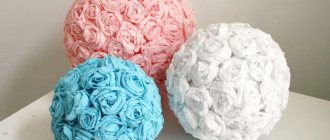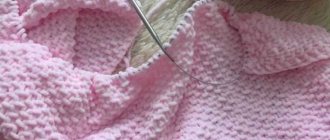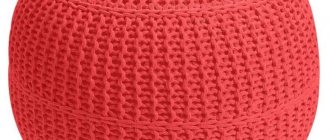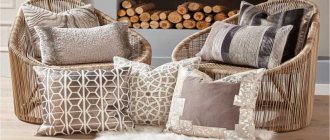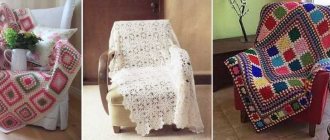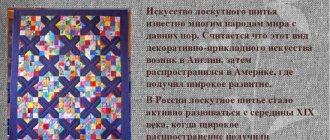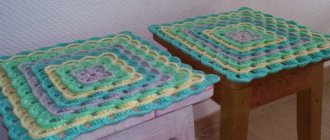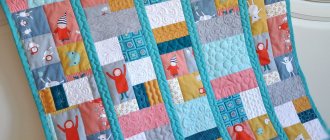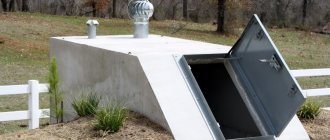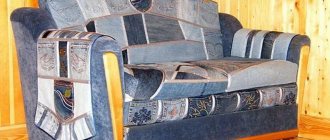Merino wool blanket for a cozy atmosphere in the home
Blankets made from thick yarn - elegant luxury of comfort
The most successful purchase for your home will be a merino blanket. Finished products are found in the collection of the American brand Modern Wool. But prices for branded goods are steep, and delivery will cost a hefty sum. It is much more interesting and cheaper to knit a product from merino wool yourself.
Merino blanket is a high-quality product that has a completely natural composition
Thick knitting thread is available to a wide range of consumers. You can knit from conjugated fibers and combed tape.
Thick merino wool yarn in a skein
The latter is popular among knitters, but items made from unprocessed material have disadvantages:
- they cannot be washed;
- the finished product is prone to deformation;
- When working with tape, there is a high probability of rupture due to the low strength of the raw material.
Twisted merino thread is more expensive, but much better. It does not stretch, break or split into fibers. The self-knitting will not lose its shape, and with careful care it will last for many years.
Delicate, thornless, premium twisted thread made from fine merino wool fibers
Ready-made merino knitting is cozy, homey, warming and pleasant to the touch. Items made from worsted wool cannot be compared with products made from synthetic fibers and knitted cord.
Merino wool is hypoallergenic and antibacterial thanks to lanolin, a natural antiseptic, and therefore suitable for children
Is it machine washable?
Taking good care of the product means delicate hand washing using conditioner. Careful flat drying and light ironing with a warm iron are required.
Full relax
If a triangle is drawn on the product label, then machine washing is allowed, but it is worth considering a delicate cycle and a water temperature of no more than 30 ° C. A lot depends on the composition of the raw materials from which the blanket is made.
Note! It is possible to add sheep wool fibers from other breeds, making the fleece more resistant to washing.
The manufacturer depicts a bowl of water on the label if the product can be hand washed. In this case, it is possible to use gentle products that exclude the presence of chlorine for bleaching.
You might be interested in this Detailed description and features of drape fabric
The absence of appropriate signs indicates that you should limit yourself to dry cleaning the rug without using water. Increased attention to an expensive product that competes with alpaca products will extend its service life.
Plaid after washing
How to properly wash a merino wool blanket
It is not always possible to get rid of dirt with just dry cleaning. Shaking and periodically drying with fresh air ventilation will eliminate the need to wash the blanket.
It should be noted that if washing cannot be avoided, then the correct actions will keep the fibers in their original form. Using smooth movements without much friction, wash the blanket in warm, comfortable water with the addition of conditioner.
Note! Prolonged soaking and washing in hot water can lead to shrinkage of the product, and not always symmetrically. A large knit merino blanket requires a special approach to cleaning it from dirt.
Merino wool blanket
Frequent washing is not recommended by the manufacturer. This is justified by the fact that knitted wool is even more delicate than sheep's down, which does not require periodic washing and cleaning. Stains can be removed with ordinary white laundry soap, rinsing off the residue with warm water.
Is it possible to wring out and how to dry?
The product should not be twisted, like most knitted wool items. By squeezing a blanket, you can disrupt the structure of the fibers, so it is recommended to leave the product on a special rack or place it at the bottom of a basin so that the water can drain naturally. When the excess moisture has drained, you need to lay out the blanket, leveling it over the entire area.
Factory plaid
Proper drying of the blanket in a horizontal position will ensure that it retains its shape. Excess moisture can be collected with a terry towel. The use of hair dryers and heaters is prohibited. Drying in the sun is not recommended. There is no need to iron the blanket.
How to make a chunky knit blanket
All that remains is to figure out how to create a soft blanket at home. If everything is clear with the choice of material, then the question regarding the tools remains open. Regular hooks will not work. Unfortunately, large-diameter tools are not sold in all stores.
Thick wooden knitting needles are quite suitable for knitting
Available means will come to the rescue: plastic tubes with a cone-shaped top, tightly rolled rolls of paper tied with tape, etc. The circumference of the tube can reach 20 cm or more. The thicker the thread, the larger the diameter should be.
A device for knitting a chunky knit blanket
Merino wool produces fluffy and light garments on large knitting needles. If you work with crochet, the fabric will come out thin. This solution is suitable for rugs and bedding, but blankets and bedspreads should be made more loose and soft.
The blanket can be knitted not only with stockinette stitch, but also with patterns
Link this immediately: how to make money on handmade blankets
Soft, chunky knit blankets made from merino wool are produced in America and Australia. Muscovite Anna Avdeeva decided to establish their production in Russia, despite the fact that large quantities of the required breed of sheep for such wool are not bred in Russia. Thanks to her ability to find a good supplier, she was able to offer a lower price for finished products than her competitors. Anna Avdeeva told the Biz360.ru portal about how Woolie blankets are winning over buyers from Russia and Belarus.
Dossier
Anna Avdeeva
, 26 years old, founder of a company that produces hand-knitted merino wool blankets. Graduated from the State University of Management. After university, she worked in government organizations, where she was involved in procurement. Before founding the company, Woolie had little entrepreneurial experience.
Business inspired by new living room
Woolie chunky merino wool blankets appeared thanks to Anna Avdeeva’s family moving to a new home. After construction was completed, Anna began decorating the rooms, and when she was working on the living room, she realized that some unique detail was missing. And Anna remembered the large-knit merino wool blankets, photos of which she saw several years ago on social networks. “They sunk into my soul. But the price of such blankets was too high and amounted to several thousand dollars. I couldn’t afford such a purchase,” admits Anna Avdeeva.
And then she and her husband thought that for the living room, in order to save money, they could knit a blanket with their own hands. However, it turned out that finding good quality wool is a real problem. Therefore, I had to knit from rolled fabric. “It turned out, to put it mildly, so-so,” Anna says honestly.
I didn’t want to decorate the living room with such a blanket. And Anna began to look in European blogs for information about where you can buy merino wool. This is how information was found about a workshop in Europe, from which the girl ordered wool. After a series of experiments, she managed to knit a blanket that she and her husband found very cute.
Then, at the end of 2020, the idea arose that other people would want such beautiful products in their home. And Anna decided to start producing blankets, opening the Woolie company.
The project was launched with loan funds
It took several months to find a supplier of merino wool. Anna Avdeeva proceeded from the fact that her blankets should not be too expensive. “Our key idea was that such beautiful blankets should be available to everyone. The price of several thousand dollars was contrary to our worldview,” she recalls.
But finding a supplier of wool of the required quality at an adequate price turned out to be difficult. Merino wool is an extremely expensive material. In addition, it must be properly processed and prepared. And here Anna’s many years of purchasing experience came in handy. She had to communicate with many Russian factories, as well as distributors and foreign suppliers. It was possible to form a pool of suppliers who could provide the appropriate quality.
The main supplier is a Russian factory specializing in wool processing. Wool is supplied to the factory from both Russia and Australia. But we immediately had to negotiate large volumes of purchases so that the cost of wool would be lower than at retail. This made it possible to ensure an affordable price for the finished product. To store wool, we immediately had to rent an office, which has a small warehouse.
The initial investment in the Woolie project amounted to about 1.5 million rubles; a significant part of these funds was taken on credit.
After purchasing the wool, the time for experimentation began - how to prepare it correctly, what knitting to use, what tools to use, what colors and sizes to choose. About 50 kilograms of expensive wool were spent on trial and error. Now Anna Avdeeva does not reveal those professional secrets that she came to through experience: for example, she refuses to talk about the method of processing wool.
With your own hands
When the young company decided on technological aspects, they began knitting blankets. At first Anna, her mother and sister did this. The founder of the company did not want to hire strangers until she was 100% confident that she could take responsibility for them. Later, when there were more orders, several people were hired. All Woolie blankets are completely handmade.
The first clients were friends and their acquaintances. They shared information about the launch of the Woolie project on social networks and posted beautiful photos. These posts became the first advertisement.
When seeing photos of Woolie blankets, many people have one reaction: admiration and a desire to get the same thing for themselves. “Such things have never happened in Russia, so our products are of interest. They ask a lot of questions. People want to know where we get wool, how we knit, how much time we spend on making one blanket,” notes Anna Avdeeva.
When Anna realized that customers liked the products, she began investing money in marketing. The main problem was finding the target audience and optimal marketing platforms. Since the product is new and non-standard, I had to learn everything in practice. We invested little by little in different channels: contextual and media advertising, PR, referral marketing (“word of mouth”).
Anna’s husband, who has experience in this field, helps with marketing and promotion. It was quite easy to agree on cooperation with popular bloggers. This is because they, like most people who have seen Woolie blankets, wanted to get one for themselves.
Competitors are far away, but they exist
At the project launch stage, Anna found out that her competitors were one company from America and one from Australia. At the same time, a girl from Ukraine was using crowdfunding to raise money to launch a project similar to Woolie - to make large-knit blankets and snoods from merino wool. The fact that the fundraising was very successful gave Anna additional incentive.
To differentiate herself from her competitors, the girl decided to use a wide range of colors. So that everyone can choose a blanket to their liking and add bright colors to the interior of their home. However, the most favorite color among its customers is still white.
One of the main competitive advantages of Woolie blankets is their cost. “We tried to make product prices as affordable as possible for everyone, including through purchase prices for wool. At the same time, our quality is in no way inferior to our competitors. Based on our pricing, we consciously accepted the risk of low margins. This does not allow us to cooperate with most retail decor stores - we cannot offer them big discounts,” says Anna Avdeeva.
The smallest Woolie blanket costs 4,900 rubles, the largest – 13,900 rubles. At the same time, competitors' prices are not in rubles, but in dollars or pounds. And it is five to ten times higher than Woolie.
The owner of the company explains the low cost by the fact that she tries not to inflate expenses, but spend only on the essentials. “We deliberately refused to distribute through chain stores, which require at least a 20-30% commission. Well, usually the key pricing parameter is the greed factor. Ours is moderate."
Buy a blanket - only through the website
Woolie blankets are made from wool so soft that you want to touch them all the time. And large knitting creates a feeling of coziness and comfort. You want to immediately wrap yourself up in such a blanket, armed with a book and a cup of coffee or cocoa. Blankets are a good interior decoration. And most often they are bought precisely to create an atmosphere of comfort.
But there are also original ways to use blankets. For example, sometimes clients make unusual orders - they ask to knit covers for floor lamps, make car upholstery, a carpet, a house for pets, etc. The company takes on such orders, but with caution. You must understand that before producing a new product you will have to spend a lot of time and resources on experiments. Therefore, the cost of the original item includes possible risks.
Typically, customers buy one or two blankets. But there was a customer who ordered four blankets. And a week later the same amount. Anna Avdeeva decided that this quantity was taken for further resale. Therefore, the owner of the company delivered the second batch to the customer personally in order to meet a potential partner. It turned out that he took all the blankets for himself - he liked the products so much that the client covered all the furniture in the house with them.
You can now only purchase from Woolie through the online store. On the website, the client selects the size of the blanket, its color, leaves his name and phone number. Then the operator contacts him and agrees on the day and place of delivery. Third party courier companies are used for delivery.
Buyers from Moscow, as a rule, receive blankets the next day or the day after ordering; If necessary, the product can be delivered to them within two to three hours. Regional buyers have to wait a little longer.
Woolie had a client who specially flew to Moscow from Belarus to buy a blanket. At that time, the company did not ship to this country. But his wife was so excited about the idea of purchasing an unusual blanket that she sent her husband to Moscow to get it.
Now Woolie blankets are packaged in craft boxes, which are tied with decorative twine. Before settling on this format, we tried different types of boxes, bags and other packaging. For craft boxes, we had to search for a long time for a supplier who would offer a standard solution.
After the packaging that optimally suited Anna Avdeeva appeared, logistics difficulties suddenly arose. Since Woolie is a fairly voluminous blanket, it is packaged in a fairly large box. And storing it requires a lot of space in the warehouse. Therefore, logistics companies that provided delivery valued their services 3-5 times higher than for the delivery of small goods. “We inevitably had to monitor all delivery services in search of the best tariff. Now we use different contractors for the regions,” says Anna.
What's next
Woolie has only been around for five months, since January 2016. And already in this short period of time we managed to achieve operational payback. True, in the near future Anna Avdeeva plans to invest more significantly in marketing and distribution, which means that costs may temporarily exceed income again.
But the entrepreneur sees this as a way for further development. As summer approaches, she fears demand for Woolie blankets will drop. Still, many people associate this thing with warmth and with the fact that it is necessary exclusively in the cold season. The company is now trying to convey the message on social networks that Woolie is, first and foremost, an interior decoration that helps create comfort in the home. And an indispensable thing for summer evenings - on the street and outside the city you won’t be afraid of the coolness with Woolie blankets.
Now we manage to sell several hundred blankets a month. To increase sales volumes, the company is working on offline sales in Moscow shopping centers, as well as sales abroad. “There is a lot of work, as well as ideas,” sums up Anna Avdeeva.
Ultra-fashionable chunky knit blanket without knitting needles
You can knit a blanket from cut strips of knitwear or combed ribbon without using the usual knitter tools - knitting needles and hooks.
Wool combed into a ribbon for felting is often called combed ribbon or tops
Thick merino wool produces voluminous fabrics made directly on the hands.
We start casting on loops on our hands
Add the second and next loops
The set is carried out on the brush, after which the resulting rings are folded into an even line without tension.
When casting on loops, you need to monitor their size
Next, the yarn is unwound to complete the first row. New loops are formed from it and pulled into existing ones. At the same time, the knitting remains, as it were, open, because there is nothing to hold the thread. However, this does not interfere with work. Due to the thickness and heavy weight of the yarn, nothing slips.
We knit the second row of our blanket on our hands
Without special tools, you can knit with front and back stitches, braids and plaits, and simple patent patterns. The last row is closed as usual: a new thread is threaded through two loops, it is thrown over the next loop and pulled out again. And so on until the row is completed.
We close the loops of the last row
The main problem when working with this technique remains maintaining even rows. If the knitting needles have a specific diameter, then the thickness of the hands varies. For this reason, it is not possible to make the broaches absolutely even, and skill is required when working.
Do-it-yourself ready-made gray blanket from thick yarn
Choosing the right thick yarn for hand knitting
For industrial or DIY knitting of a coarse knit blanket, it is customary to use some types of thick yarn. The most common option is raw merino wool, otherwise called unspun.
These types of wool include tops or, in other words, combed tape. This type of wool is a direct raw material for various woolen products. It is presented on the market in the form of a ribbon made of many wool fibers, the width of which reaches about five centimeters. Quite often, combed tape is sold as thick yarn. Considering its technical parameters, very attractive voluminous items can be made from tops, either by knitting or crocheting: items of clothing, home furnishings or accessories.
Tops advantages:
- combed ribbon can be perfectly used for knitting not only with the use of tools, but also simply by hand;
- Products made from high quality combed wool tape are soft and airy;
- raw wool gives the finished item a special chic.
Disadvantages of combed tape:
- tops are not finished yarn, which means there is a risk of tearing them during operation;
- untreated wool tends to disintegrate into fibers, become deformed, in particular, stretch during knitting, fluff and become flaky;
- Products made from combed tape, due to its listed properties, cannot be washed in order to prevent their damage; difficulties may also arise if they are processed in a dry cleaner.
Spun and processed thick yarn has significant differences from tops. This option is the final complete product for handicrafts, the thickness of which can vary from half a centimeter to two centimeters. The main distinctive feature of spun wool is the twisting of its fibers, their impeccable matting in the thread, which is obtained in the process of mechanical and thermal treatment of the yarn specially used for this purpose.
Advantages of spun wool:
- wet-heat treatment of this type of thick yarn guarantees the constancy of the shape of the future product;
- the spun thread does not tear, does not separate into fibers, or fluffs up during knitting and subsequent use of a product made from it;
- Items that are not too large and made from spun wool can be hand washed at low water temperatures.
Disadvantages of spun wool:
- a small degree of stalling during use of a product made from it;
- For large items made from this type of yarn, which, in particular, include large knitted blankets, professional dry cleaning is recommended.
How much yarn do you need?
You can knit a blanket from thick yarn in a short period of time, because a couple of rows are enough to cover a significant area. The thread consumption is significant, so the skeins often have a larger volume than for traditional knitting. How many skeins you need depends on the desired size. It is recommended to adhere to the following scheme:
- a children's model up to 120 cm in length will cost 2 kg;
- for a product measuring 100 X 170 cm (plus or minus in one direction or another) you will need about 4 kg;
- for a full-fledged blanket for an adult, 5.5–6 kg of material is needed.
Blankets from fragments: knitting and sewing
An original blanket made from merino yarn made from multi-colored fragments sewn together
Knitting in the patchwork style is always popular, because it allows you to rationally use leftover yarn and your own imagination to create masterpieces of home textiles.
Bright and warm, soft to the touch “Autumn” blanket made of thick merino wool
For a product with a voluminous texture, you will need tools of impressive diameter, but not as huge as for seamless knitted fabrics. You can sew together scraps of different sizes and textures. The main thing is to steam all the pieces before stitching so that they take the final shape. Otherwise, the finished blanket will be lopsided.
A beautiful “Chess” blanket can be knitted from individual elements or as a whole fabric
Flaps can be made from any available raw material. It is best to sew the resulting fragments together with a contrasting thread, then the canvas will turn out to be especially expressive and bright. The same thread should be used to crochet the product around the perimeter.
To connect threads during knitting and when tying individual elements, it is better to use a special needle for felting
Pompom blanket for children and more
Parents always want to create something special for their kids. Excessively large loops and stockinette as a pattern may seem too rough for children's skin. Blankets made from pompoms look much more attractive in appearance and feel more pleasant to the touch. They are easy to do, but preliminary preparation is important. First you need to create a frame, the dimensions of which should be slightly larger than the desired result (on the frame the canvas will be stretched). Long nails are driven in along the perimeter of the frame in increments of 4-5 cm. They should stick out from the block by at least 5 cm. If the pompoms are voluminous, then by 8-10 cm.
Preparing a wooden frame for threads
Next, take the warp thread (otherwise known as the backing thread) and wrap it around the nails. This must be done in a certain order. First come the horizontal rows, then the vertical ones. The procedure is repeated several times.
We wind the threads in rows horizontally and vertically, alternating
If a pattern is planned, the color is changed. To get variegated pompoms, take more than three colors. It is important that the thread is of the same thickness and similar composition. After winding, the joints are secured with knots.
We tie all intersections with reliable strong knots to prevent unraveling
And then the colored tensions are cut without affecting the substrate. The result is lush pompoms. The threads around the perimeter are also cut, leaving them in the form of tassels.
To form pompoms, cut the threads with scissors in the middle between the intersections
For a baby, such a thing will be a real gift, and if you make the frame larger, you will get a lush and cozy blanket for an adult.
A beautiful fluffy baby blanket with your own hands is ready
Do-it-yourself blanket: how to knit and what yarn to choose
Do you like to decorate your home with original things? Looking for any opportunity to make something fun? We offer you the idea of making a knitted blanket with your own hands - it will add mood and bring zest to your interior, and warm you with its warmth on a cool evening.
Knitted blanket is one of the trends of recent years. And no wonder. The possibilities for using this stylish little thing are great: a blanket can be used as a bedspread and blanket (which is especially important in the off-season), it can become a temporary cover for furniture, a warm and soft rug on the floor, create a cozy and inviting atmosphere in the house, you can wrap yourself up in it while sitting next to TV with a cup of hot coffee...
There are also many options for making a knitted blanket - here you can give free rein to your imagination. Thicker or thinner, small or large, classic or “playful”, square or oval, large or fine knit, with or without complex relief patterns - the choice is unlimited.
You can knit a blanket in a variety of ways. Not only with knitting needles and crochet we are used to, but even with our hands. Surprised? Meanwhile, the latter option is becoming increasingly popular today, and it is not at all difficult to implement. But first things first.
How to choose a blanket?
These blankets do not miss the opportunity to appear on the pages of glossy magazines, and bloggers can no longer imagine their photographs without a “blanket” beautifully thrown on the sofa. And we have no choice but to rush to look for an excellent specimen for our home. So where can you get it?
The founders of this “innovation” were the American company Modern Wool, which still operates today. In addition, they produce hats, scarves, pillows - everything is very thick and merino. The disadvantage of this company for the Russian consumer is the lack of delivery to Russia and significant prices. The situation is approximately the same with a fairly young Ukrainian brand, oriented primarily to the West.
It’s good that Russian manufacturers are not lagging behind. Reasonable price, good quality and the possibility of different purchasing options - these are the distinctive features of the domestic seller.
Knitted and crocheted blanket
You can knit and crochet a lot of things.
The hook gives more opportunities for creativity: it can be used to create a wide variety of patterns and options. With the help of a hook it is easier to move from motif to motif if we are talking about a large solid blanket (not knitted in fragments).
Knitting needles in knitting a blanket can be used both circular and regular (pair). In the latter case, the blanket will consist of several squares that are sewn together. Their pattern and color may not match - then the product comes out in a patchwork style.
The simplest knitting is garter stitch. However, you should not use only this one - the edges of the blanket will bend. It’s convenient to knit a blanket with Canadian elastic: the stitches are easy to count, and if you lose count, it’s immediately obvious. Rib knitting is elastic and wear-resistant (it is used for knitting cuffs and the bottom of sweaters, etc.). Advanced knitters will have no difficulty knitting a blanket with braids and other embossed designs. Of course, it is worth mentioning that they will require more yarn than simple knitted blankets - but what a result! It is preferable to use a knit that will look good on both sides, because the underside of the blanket will be visible.
If you are still new to knitting and are afraid of not guessing the width of the future blanket, initially make a small test sample. Cast on twenty loops and knit several rows along with fragments of the pattern (if one is planned), then measure the resulting number of centimeters in width of the sample and calculate how many loops you need to cast on to get a blanket of the desired size.
What pattern do you need for a blanket?
The choice of pattern is influenced by the yarn:
- For straight threads, you can choose any pattern. If the product is for children, then the baby’s fingers will easily get caught in the openwork knitting.
- Therefore, large patterns are better; they are much easier to work with.
For beginner craftswomen
Any patterns will seem difficult for beginners; for them it is better to choose combinations with different colors of yarn. These can be large squares or stripes, which will decorate the product and be easy to make. You can choose 2 shades of thread or several, it’s up to the master’s taste.
Advice! You can alternate knit stitches with purl stitches; all you need to do is change the colored skeins of thread. So, without using patterns, it’s easy to achieve an excellent result!
The edges of the product can be decorated with fringe or crocheted.
Plaid with hands
You usually knit (or “weave”) a blanket using super thick yarn by hand. However, you can do without knitting needles and a hook when creating a blanket with your own hands from ordinary yarn - then the product turns out to be openwork, very openwork!
Blankets made from unusually thick natural wool yarn, mainly merino, are winning more and more hearts of needlewomen (and not only) with their interesting, catchy appearance. When you see such a blanket for the first time, you might think that this is a designer item that cannot be made independently. In fact, knitting a blanket from thick yarn is not difficult. You can use special giant knitting needles, or you can weave it by hand. Most often, a thick blanket is knitted in a simple stitch, without patterns. The hand knitting technique is no different from the usual one: the basic loops are first thrown over one hand, then transferred to the other, which serves as an incoming knitting needle.
You can learn how to knit a blanket by hand from the video.
When you use your hands instead of knitting needles, knitting turns into a kind of game: you must admit, it’s fun to cast on stitches on your hands! Well, if you involve a child in an unusual activity, the blanket will turn out doubly “warmer.”
On average, it takes about 3 kg of yarn to create a thick yarn blanket. For a product about a meter wide, cast on 15 loops (a hand is enough for them). In terms of time, if it takes about 5 days to knit a blanket from regular yarn, then it takes only 1.5 hours to weave a blanket from thick yarn by hand. And this is only for beginners! Advanced needlewomen spend less than an hour on the process.
Basic criteria for choosing yarn for knitting a blanket
You cannot choose a material only by color and price - there are more important criteria that should come first.
Knitting pattern
This is perhaps the most important factor influencing the choice of suitable yarn. Not every thread can be used to create the intended motif. The simplicity and ease of knitting and, as a result, the pleasure of working depend on the right decision.
If you like openwork motifs , you should choose thin threads with little fluff or without it. A slight fluffiness of the yarn can hide inaccuracies and errors in work; the fluff gives the blanket additional softness and is pleasant to the skin. But it smooths out the pattern and hides the openwork underneath, so you should not use this yarn when clear lace lines are required.
Also, you should not buy yarn with fuzz for knitting baby blankets and blankets for babies. Fluff can get on the baby's face, disturb him during sleep, cause irritation, itching and cause a lot of other troubles.
Volumetric weaves and braids look more impressive if made using threads of medium thickness. It is most practical to choose wool threads.
To create patterned motifs using the Patchwork technique, yarn of any thickness and color is suitable. Most often, threads of different colors are used in one product. It is important to remember that the yarn chosen for such a blanket must be the same in thickness and material .
It is not advisable to combine thin threads with thick ones, wool with cotton, etc. The different properties of the threads will not have the best effect on the appearance of the finished product and will complicate its care in the future.
Purpose is not the last criterion
An important factor in choosing yarn is the household purpose of the blanket. It is important to remember here that the lighter the finished product, the more versatile it will be.
Lightweight models can be used instead of bedspreads and covers on sofas, beds and armchairs. If necessary, you can hide with them while sleeping or wrap yourself up after a winter walk, sitting comfortably by the fireplace.
Blankets made from thick yarn are quite heavy, sometimes reaching a weight of more than three kilograms. These are often chosen as decorative interior elements: bedspreads, covers and rugs. The finished product is thick enough to lay the blanket on the floor.
For children's blankets, predominantly fine types of yarn are chosen. Light, almost weightless blankets easily fit into a crib or stroller. They are convenient to use as an envelope, wrapping your child before going for a walk. Read more about kid-friendly yarn here.
Season is an important guide
When choosing yarn for knitting a blanket with your own hands, you should take into account the season in which you plan to use it. So, when creating a bedspread for cool summer nights, cotton threads . But here it is important to remember that specially treated mercerized cotton has a rather rigid structure, so it is better not to choose yarn with this property.
Blankets for rainy autumn evenings are best made from thin woolen threads. Such a blanket will serve as an excellent bedspread, bring coziness to the house and, if necessary, warm the body, sitting comfortably on the shoulders.
For the winter season, warm blankets are knitted from medium-thick wool threads using voluminous weaves and braids. Such motifs make the products softer and more structured, which allows them to retain more air, making them even warmer. For decorative purposes, you can choose warm-colored yarn to make a winter blanket.
Knitting duration
Another important aspect when choosing yarn for a blanket is the duration of the work. Everyone determines this factor for themselves depending on their temperament, free time and skill level.
Making complex openwork motifs from thin threads requires much more time than weaving with garter stitch from large yarn. Making a lace blanket from the finest merino wool can take months of work. While weaving giant yarn by hand takes several hours.
Children's blanket
To create a baby blanket with your own hands, you should be especially careful when choosing yarn. First of all, it must be hypoallergenic. This means that if you do not know for sure whether your baby is allergic to wool, then it is better to avoid this component in the yarn. In addition, the wool is itchy - also not the best option for a child, especially a very young one. For a lightweight blanket, it is better to choose cotton yarn. You should avoid yarn that is too fluffy, as particles of lint and fluff may end up on the child’s body and face.
A children's blanket gives a lot of room for imagination in its manufacture. An interesting option is a blanket with donuts, looking at and grabbing them will be a fun activity for your baby. Pompoms can be placed on the blanket in a chaotic manner or made into some kind of pattern. Feel free to experiment: pompoms can be of different sizes and made from different yarns. You can learn how to make pom-poms with your own hands and what yarn to choose for making them from our article. A baby blanket can be knitted in a variety of ways. However, when choosing a knitting, keep in mind that it should not be too delicate: it is possible that the baby’s fingers will get into the holes of the pattern and it will get tangled. Thanks to a creative approach, a knitted blanket can acquire “ears”, a hood, buttons for transformation, etc.
What yarn should not be used?
You can choose the most beautiful and soft yarn for a set or blanket for a newborn, but it will not work and may even cause harm.
What threads you don’t need to buy:
- fluffy, with long pile. A small child always puts clothes in his mouth, especially when teething. Yes, and for older children, fluff will get into the mouth, get into the nose, and provoke sneezing. You should choose the smoothest thread possible;
- plush yarn, velor. This thread is now very popular, intended for knitting blankets and toys, it is often marked “Baby”, but not everything is so good. If you look closely, plush threads are wound around the base. If you pull, they unwind easily. This option is definitely not suitable for children under one year old;
- hard, scratchy yarn. It will cause irritation, the baby will be capricious, and older children will refuse such clothes.
By the way, plush yarn also consists of 100% acrylic, it is dense, does not allow air to pass through, and creates a greenhouse effect. This option is not suitable for knitting clothes for newborns.
Do-it-yourself blanket: how to knit and what yarn to choose
Do you like to decorate your home with original things? Looking for any opportunity to make something fun? We offer you the idea of making a knitted blanket with your own hands - it will add mood and bring zest to your interior, and warm you with its warmth on a cool evening.
Knitted blanket is one of the trends of recent years. And no wonder. The possibilities for using this stylish little thing are great: a blanket can be used as a bedspread and blanket (which is especially important in the off-season), it can become a temporary cover for furniture, a warm and soft rug on the floor, create a cozy and inviting atmosphere in the house, you can wrap yourself up in it while sitting next to TV with a cup of hot coffee...
There are also many options for making a knitted blanket - here you can give free rein to your imagination. Thicker or thinner, small or large, classic or “playful”, square or oval, large or fine knit, with or without complex relief patterns - the choice is unlimited.
You can knit a blanket in a variety of ways. Not only with knitting needles and crochet we are used to, but even with our hands. Surprised? Meanwhile, the latter option is becoming increasingly popular today, and it is not at all difficult to implement. But first things first.
Plaid pattern
Knitted blankets look original and are practical to use. This is a smooth knitted fabric, where the pattern is formed by alternating different types of loops or with a knitted pattern. Such patterns are more suitable for knitting.
If you crochet
- Beginner knitters choose simple patterns from a combination of double crochets and chain stitches - fillet knitting. The combination of simple knitting and melange threads gives an excellent result. Section-dyed yarn is also suitable.
A simple repeating pattern for knitting a blanket with your own hands
Square motifs made of delicate yarn in soothing colors
Knitted blanket for a newborn “Lacy Fairy Tale”
Children's knitted striped blanket, made with love for a little princess
Plaid with hands
You usually knit (or “weave”) a blanket using super thick yarn by hand. However, you can do without knitting needles and a hook when creating a blanket with your own hands from ordinary yarn - then the product turns out to be openwork, very openwork!
Blankets made from unusually thick natural wool yarn, mainly merino, are winning more and more hearts of needlewomen (and not only) with their interesting, catchy appearance. When you see such a blanket for the first time, you might think that this is a designer item that cannot be made independently. In fact, knitting a blanket from thick yarn is not difficult. You can use special giant knitting needles, or you can weave it by hand. Most often, a thick blanket is knitted in a simple stitch, without patterns. The hand knitting technique is no different from the usual one: the basic loops are first thrown over one hand, then transferred to the other, which serves as an incoming knitting needle.
You can learn how to knit a blanket by hand from the video.
When you use your hands instead of knitting needles, knitting turns into a kind of game: you must admit, it’s fun to cast on stitches on your hands! Well, if you involve a child in an unusual activity, the blanket will turn out doubly “warmer.”
On average, it takes about 3 kg of yarn to create a thick yarn blanket. For a product about a meter wide, cast on 15 loops (a hand is enough for them). In terms of time, if it takes about 5 days to knit a blanket from regular yarn, then it takes only 1.5 hours to weave a blanket from thick yarn by hand. And this is only for beginners! Advanced needlewomen spend less than an hour on the process.
Knitting on ring needles
Knitting needles on a fishing line make the task much easier, since the fishing line allows you to cast on the largest possible number of loops without fear that they will slip off at the most inopportune moment. We knit a large knit blanket according to the standard pattern.
- We cast on the required number of loops.
- We remove the first one, do not knit it.
- Knit a row to the end.
- We turn the finished row over and get purl rows.
- We remove the first one, do not knit it.
- Knit until the end of the row.
Video instruction “How to knit a blanket with circular knitting needles”:
Children's blanket
To create a baby blanket with your own hands, you should be especially careful when choosing yarn. First of all, it must be hypoallergenic. This means that if you do not know for sure whether your baby is allergic to wool, then it is better to avoid this component in the yarn. In addition, the wool is itchy - also not the best option for a child, especially a very young one. For a lightweight blanket, it is better to choose cotton yarn. You should avoid yarn that is too fluffy, as particles of lint and fluff may end up on the child’s body and face.
A children's blanket gives a lot of room for imagination in its manufacture. An interesting option is a blanket with donuts, looking at and grabbing them will be a fun activity for your baby. Pompoms can be placed on the blanket in a chaotic manner or made into some kind of pattern. Feel free to experiment: pompoms can be of different sizes and made from different yarns. You can learn how to make pom-poms with your own hands and what yarn to choose for making them from our article. A baby blanket can be knitted in a variety of ways. However, when choosing a knitting, keep in mind that it should not be too delicate: it is possible that the baby’s fingers will get into the holes of the pattern and it will get tangled. Thanks to a creative approach, a knitted blanket can acquire “ears”, a hood, buttons for transformation, etc.
Sources:
https://berkem.ru/tekstil/pled-krupnoj-vyazki/ https://blog.mirkrestikom.ru/pled-svoimi-rukami-kak-svjazat-i-kakuju-prjazhu-vybrat/ https://blog. mirkrestikom.ru/pled-svoimi-rukami-kak-svjazat-i-kakuju-prjazhu-vybrat/
Purposes of the blanket
Different types of blankets are suitable for different household needs. Thus, a yarn that is excellent for a night blanket may be completely inapplicable to a lace bedspread and muslin.
The bedspread is used as a decorative element of the interior. Any type of yarn can be used in its production. It is important to understand that the surface of the blanket will serve as a kind of protective cover for a bed or sofa; it will have to take on all the “blows” of fate.
When choosing yarn for such a blanket, you should pay special attention to the ease of care of the product during operation. The best solution can be all types of synthetic threads: acrylic, viscose, polyamide. Such bedspreads can be easily washed by hand or in washing machines on a delicate cycle and will retain the shape and appearance of a new product for a long time.
The blanket has a number of features that you should pay attention to when choosing yarn. Covering the body at night, it has direct contact with the skin, so it must be breathable and comfortable.
Soft natural threads are best suited for knitting blankets: cotton, merino wool, alpaca, angora. When choosing wool, it is important to pay attention to the softness of the thread; prickly and hard fibers are completely unsuitable for this.
Blankets for newborns can be divided into two groups: a blanket for sleeping and an envelope for walking outside. Based on the application, the yarn is also selected.
Soft merino wool, mixed fabrics, plush with natural fiber are perfect for a warm night blanket. In this case, the use of pure synthetic threads is not permissible, as they do not allow air to pass through well and can cause overheating of the baby and diaper rash on the skin.
An envelope for discharge or a warm blanket for walking can be knitted from any yarn, including synthetic, since it does not have direct contact with the skin and, as a rule, is used instead of outerwear.
Very beautiful models are made from plush threads; such a blanket can be decorated with mischievous bunny ears and a tail. The most important thing is that the decorative elements do not interfere with the child.
